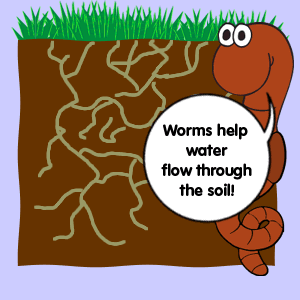Indicators on North Carolina Worms You Should Know
Table of Contents7 Easy Facts About North Carolina Worms DescribedThe Definitive Guide to North Carolina WormsFacts About North Carolina Worms RevealedThe Best Strategy To Use For North Carolina Worms
Example: 1-gallon of worm castings to 4 gallons of potting mix. Do NOT make use of a potting mix that has chemical plant foods in it. Read the labelit will claim. 1/2 cup in all-time low of the planting hole for smaller sized plants. 1 cup for bigger plants. ie. tomatoes, environment-friendly peppers, summertime squash, and the like.
The addition of tea can additionally include raised microbial biomass to your dirt. You can constantly side-dress your plants with worm castings at any kind of time. Just keep in mind, the microbes will certainly pass away if exposed to UV rays (Sunlight), so make certain to cover the spreadings with an inch or two of soil.
This baffled them for years until the screening methods ended up being better. It would certainly get much better(with even more castings), level off, and after that decline. As well numerous worm spreadings would increase the growth to a rate that the plant can not recuperate from.
Getting My North Carolina Worms To Work
Numerous herbicides service this exact same principle. So, 20% by quantity appears to be the "Dessert Spot". I have expounded the merits of worm castings for about 2000 words. What concerning the opposite side of the coin? Nothing is perfect. Worm castings are no different. It takes time to produce top quality worm spreadings.
Worm castings absolutely cost more than chemical plant foods. Worm castings are on the more affordable end of organic plant foods. (50 gallons per year) It is a much tougher and really costly financial investment to create large quantities of worm castings.

Creating a healthy soil may be the best advantage of worm spreadings. We talked about worm spreadings NPK and likewise the appropriate nutrient evaluation that must apply to worm spreadings.
5 Easy Facts About North Carolina Worms Explained
We spoke about some of the negative aspects linked with worm castings. I covered a great deal of material in this post.
The vertical burrows are normally open, although the worms cap the leading with deposit and excrement. Roots need oxygen for their development, whereas they create carbon dioxide that requires to leave the dirt.
Earthworms raise porosity by 2 devices: (1) by developing long-term burrows, and (2) by boosting dirt aggregation. Aggregation is boosted by the blending of soil and raw material in the earthworms' intestines. Lake Rhodhiss Bait. These very secure aggregates are transferred by some earthworms in their burrows, and by others at the surface area of the dirt


In an additional research, earthworms were approximated to consume 4 to 10 percent of the top 6 inches of the dirt each year. This only mosts likely to show the enormous amounts of dirt that can be processed by earthworms. Dirt compaction minimizes the porosity of the dirt. Since earthworms enhance porosity, they minimize the effects of compaction.
The Only Guide to North Carolina Worms
Regular earthworm populations can quickly consume 2 loads of dry issue per acre each year, partly digesting and mixing it with soil. The value of earthworms to mix surface residue with soil comes to be very clear in soils that do not have any type of earthworms. The majority of our Pennsylvania soils contend the very least some earthworms, and the effect of their total absence, as a result, can not be noted.
(https://colorblossomdirectory.com/gosearch.php?q=http%3A%2F%2Fwww.northcarolinaworms.com%2F&search-btn.x=0&search-btn.y=0)In these soils, the formation of topsoil with sensible organic matter content did not occur, leading to inadequate crop development. As soon as the reason was developed, the government of the Netherlands began a campaign to present earthworms. After the intro of the earthworms, a dark topsoil layer was developed, and plant development enhanced substantially.
They live mostly from partially disintegrated organic matter that is already included in the dirt. They eat their means via the dirt, developing horizontal burrows that they fill up with their waste matter. These species ingest big amounts of soil that they blend with absorbed plant residue in their intestines. or anecic varieties live in long-term upright burrows that can be 5 or 6 feet deep.
These types consume significant quantities of soil that they blend with digested deposit in their guts. Their excrement is mainly transferred at the surface area of the soil.